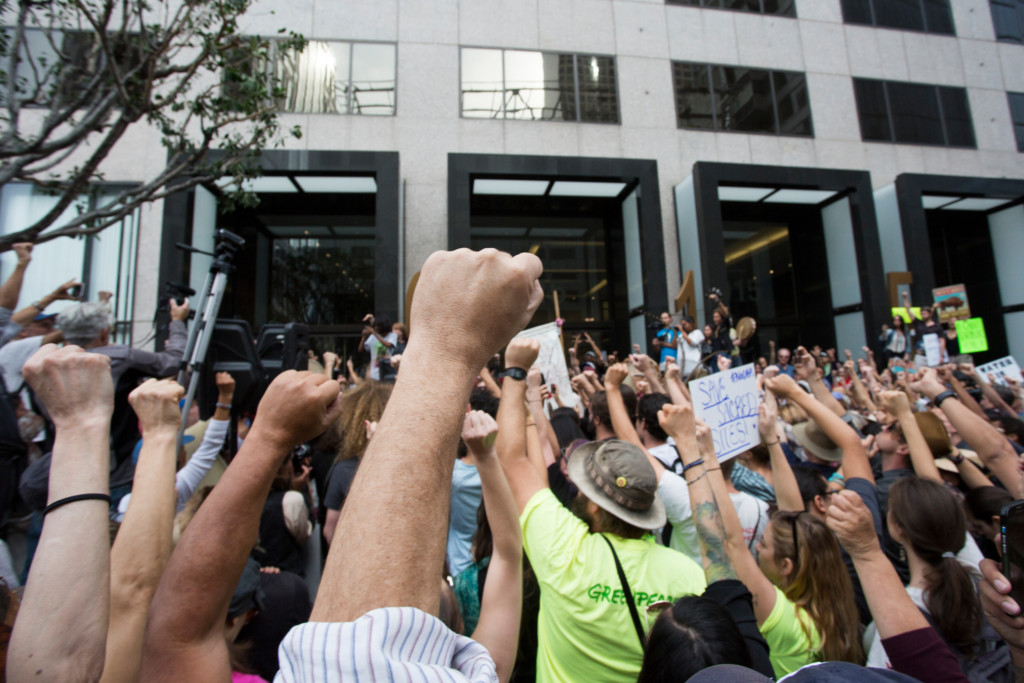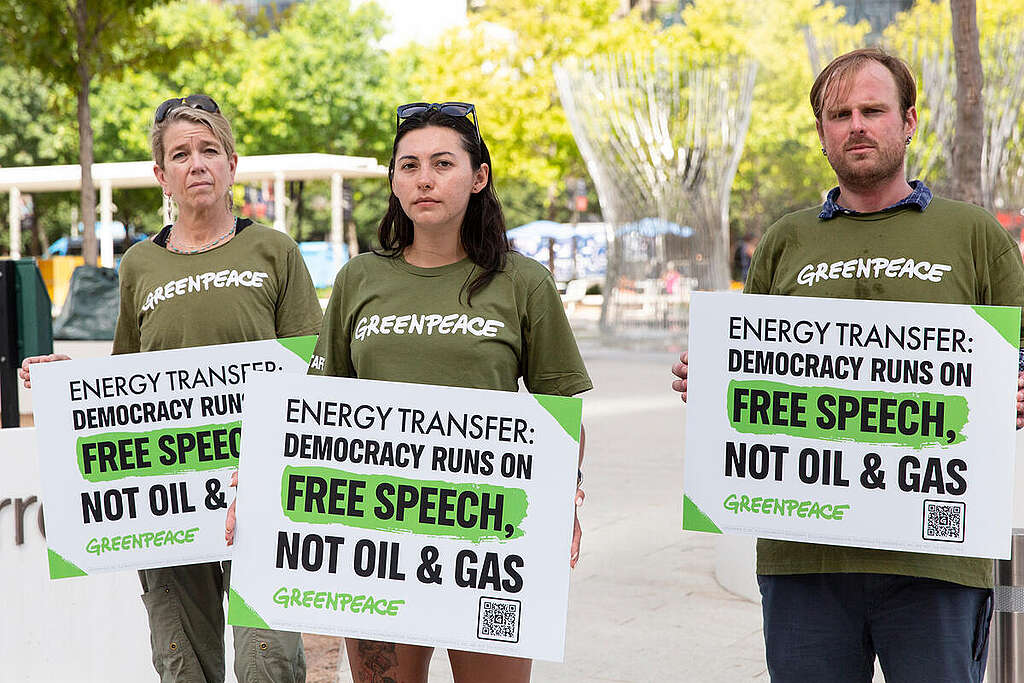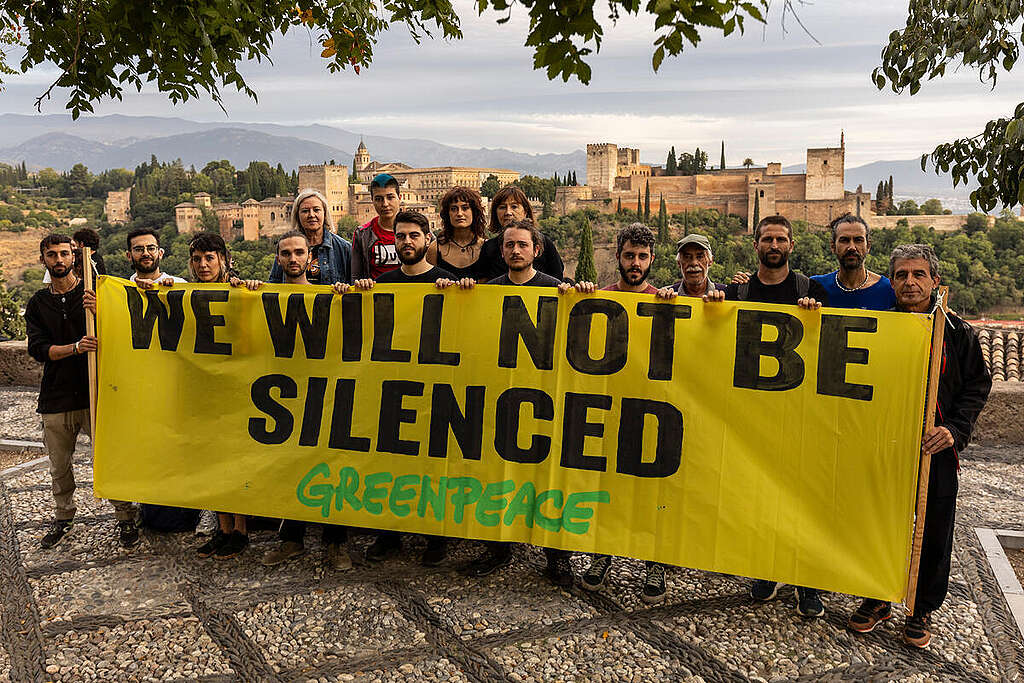Greenpeace’s fight against ET’s SLAPP lawsuit
Stay tuned for updates on the continued legal battle against Energy Transfer as well as the global response to this attack on free speech and peaceful protest.

Big Oil bully Energy Transfer is waging a SLAPP lawsuit against Greenpeace International and Greenpeace entities in the United States (Greenpeace Inc., and Greenpeace Fund) in an attempt to silence protest and rewrite the history of the Indigenous-led protest movement against the Dakota Access Pipeline. A jury in Morton County, North Dakota found the Greenpeace entities liable for more than $660 million on 19 March.
This fight is far from over!
All together now: #WeWillNotBeSilenced
Energy Transfer’s meritless, back-to-back lawsuits against Greenpeace International and Greenpeace entities in the US since 2017 are perhaps the world’s most brazen examples of a Strategic Lawsuit Against Public Participation (SLAPP).
Although laws against SLAPPs are being proposed and implemented around the world, these abusive lawsuits are currently a weapon of Big Oil bullies.
ET’s SLAPP represents a crucial test of this dangerous legal tactic that, if successful, could see it even more widely applied against peaceful protesters, especially in the US, and anyone who speaks out or criticises a deep-pocketed corporation.
Updates from the trial in North Dakota and the global response
Show your support

Legal Documents from ET’s SLAPP lawsuit


